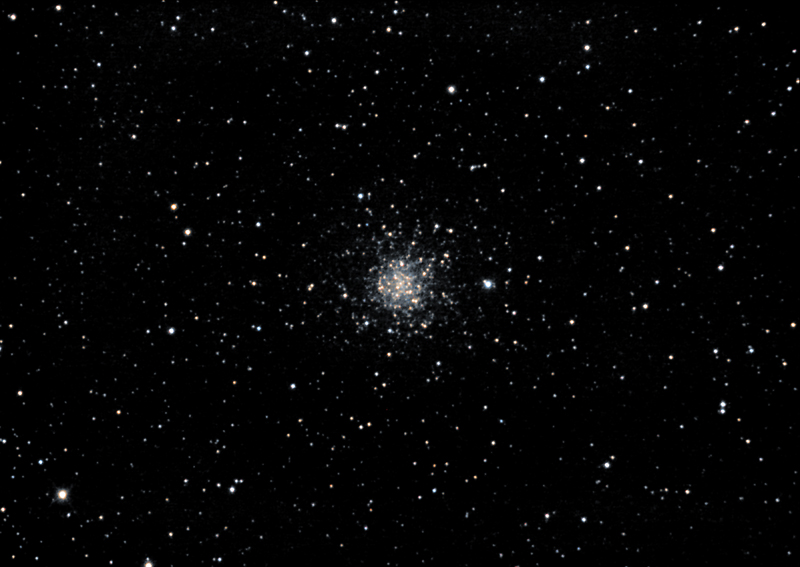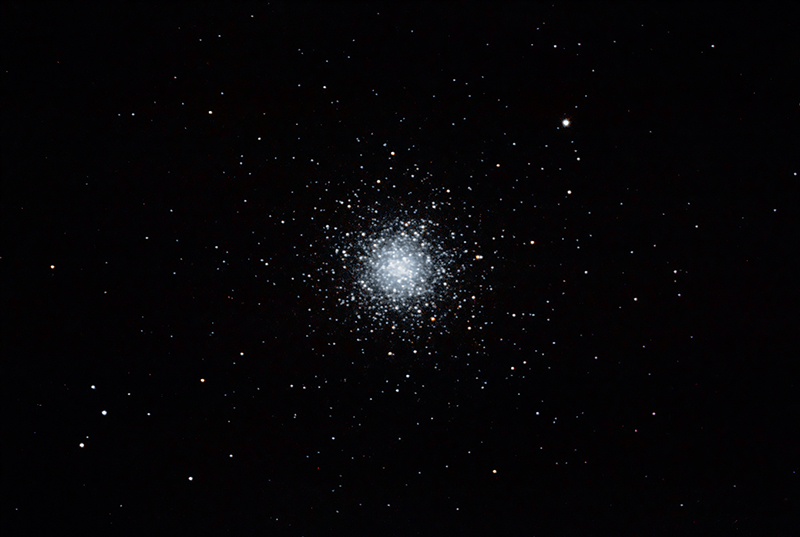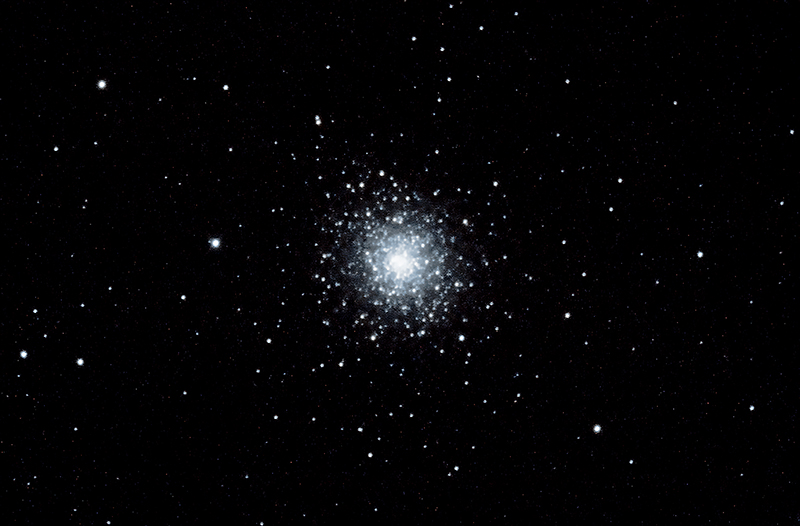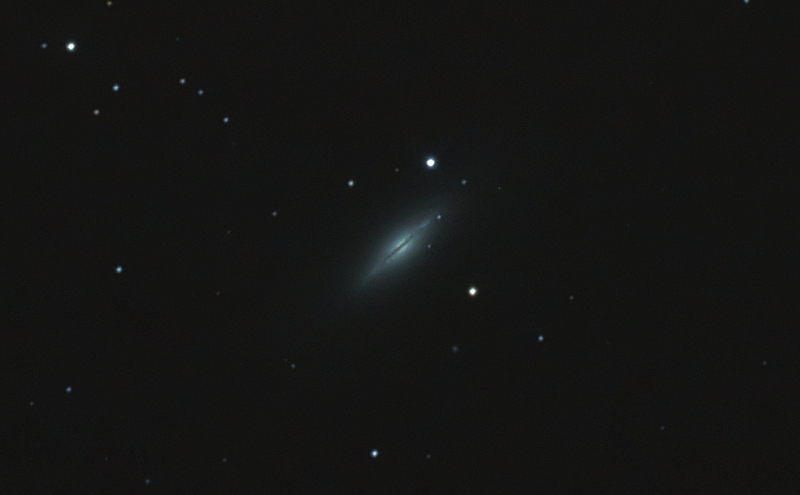Usual story... sub-zero, still and clear... out with the baby R-C scope looking at more Messier Objects. Different camera, though - I'd sold a few redundant items and used the proceeds to get a refurbished Canon 1000D body at a knock-down price. Time to give it a trial run.
Imaging-wise the process wasn't much different, with the exception of the need to take bias-frames to counter the read-out signal of the camera's CMOS sensor - this is something that I never had to do with the Nikon D50, as the CCD sensor in it has a very low read-out signal. Still, it's a small price to pay for not having to contend with long-exposure amp-glow - the Nikon had a bit of it, the Canon has none at all. Oh, and I was using different capture software - APT - which turned out to be excellent.
Anyway, I'll let the results do the talking:
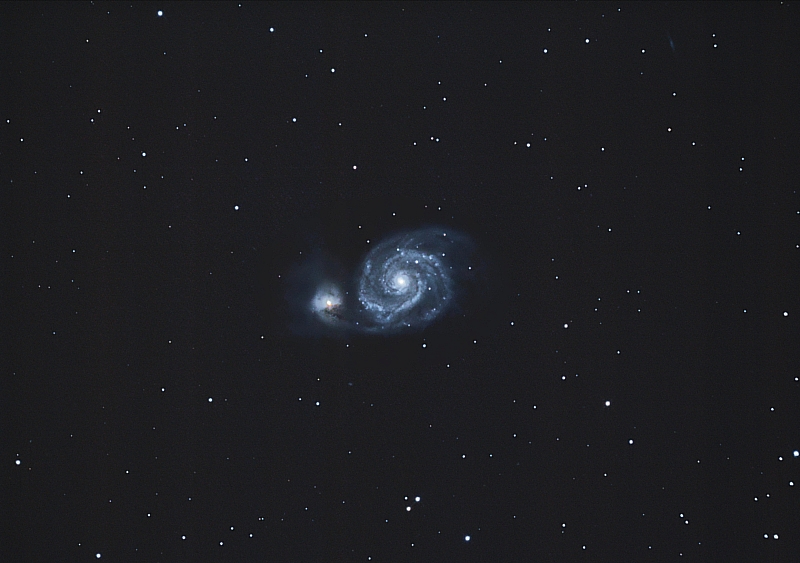
M51a (aka NGC 5194), an interacting spiral galaxy in the constellation Canes Venatici.
M51b (aka NGC 5195) is the smaller companion galaxy.
Subs: 20 light @ 300s, darks and bias frames, ISO400.
1000D on the 6" R-C, guided with PHD.
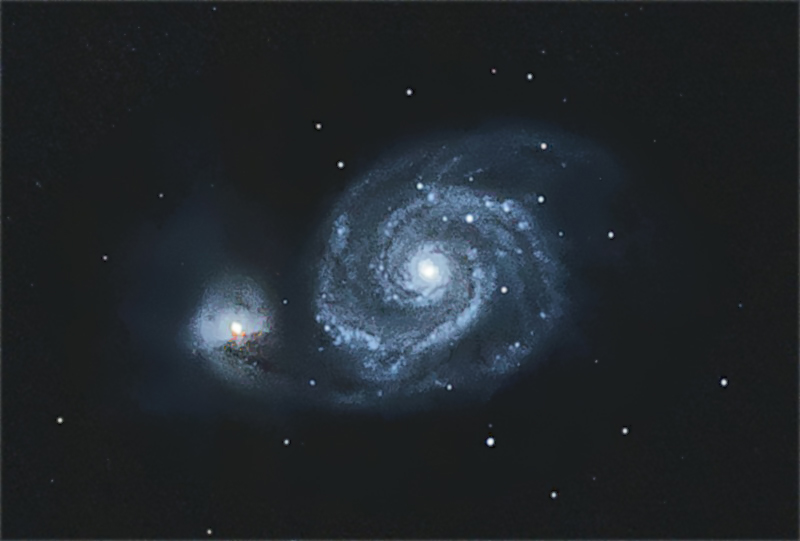
As previous, cropped, enhanced and over-cooked.
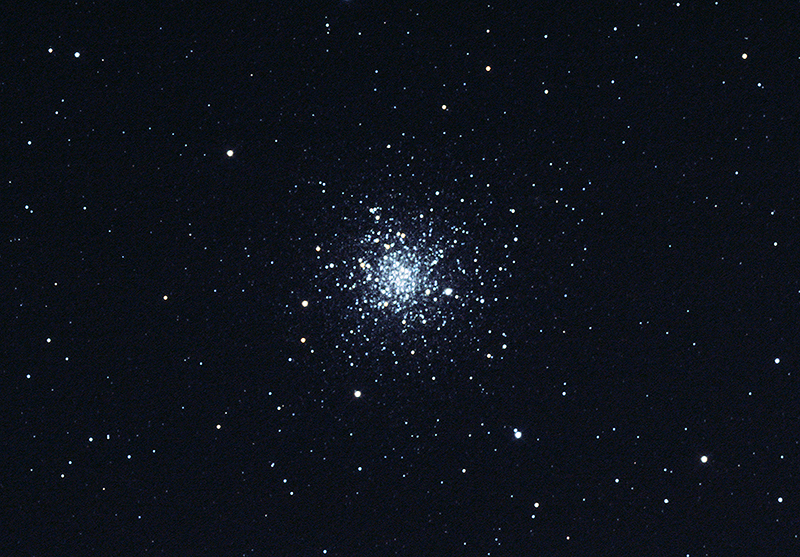
M12 (aka NGC 6218), a globular cluster in the constellation Ophiuchus.
Subs: 9 light @ 300s, dark and bias frames, ISO400.
1000D on the 6" R-C, guided with PHD.

The Leo Triplet - M65 (NGC 3623, upper-right), M66 (NGC 3627, lower-right) and NGC 3628 (lower-left) - a group of galaxies in the constellation Leo (as if you hadn't worked that out already).
Subs: 15 light @ 300s, dark and bias frames, ISO400.
1000D on the 6" R-C, guided with PHD.
Methinks I'll get to like this Canon a bit sooner than I thought.


